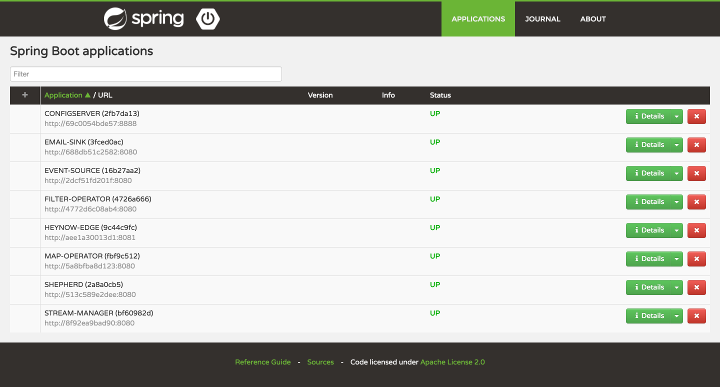Quickstart
This short guide should wal you through deploying HeyNow in test purposes, using docker.
You will need server with docker and docker-compose installed.
Recommended system requirements
- 8 cores
- 16 GB RAM
- 10 GB hard drive
Installing docker
Feel free to skip this step if you have docker and docker-compose already installed.
First, you need to install docker. To do so quick installation script provided by Docker can be used:
curl https://get.docker.com | sh
Remember to start docker service afterward.
systemctl start docker
Finally you can install docker-compose. You can get it from GitHub.
curl -L "https://github.com/docker/compose/releases/download/1.8.1/docker-compose-$(uname -s)-$(uname -m)" -o /usr/local/bin/docker-compose
chmod +x /usr/local/bin/docker-compose
Starting HeyNow
Having the server prepared you can start HeyNow.
First, download docker-compose.yml from GitHub.
curl https://raw.githubusercontent.com/heynow-io/heynow-compose/master/docker-compose.yml > docker-compose.yml
Then you can start it using docker-compose.
docker-compose up -d
This command starts the database, RabbitMQ, custom SMTP server and all the HeyNow services.
After a minute, whole system should be up. You can verify this by visiting either Eureka on port 9000 or
Shepherd on port 8080. There should be several services registered, eg. configserver, stream-manager and email-sink.

Testing HeyNow
Currently HeyNow doesn’t expose UI. To create new pipeline, you will need to use REST API.
First you need to create stream, by sending POST request to stream-manager
Fill your_email@here using your email address. This json describes stream
that has one operator - email-sink. Every time there will be plain-notification send, HeyNow will send an email.
http://<ip>/stream-manager/streams
POST
{
"name": "testing",
"description": "doing nothing really",
"rootNode": {
"operator": {
"name": "email-sink",
"eventSource": "manual",
"eventType": "plain-notification",
"properties": [
{
"name":"recipient",
"value":"your_email@here"
},
{
"name":"subject",
"value":"It's a test alert"
}
]
}
}
}
Having the stream created you can start feeding HeyNow with events.
To do so, send POST request to event-source.
http://<edge_url>/event-source/event
POST
{
"source":"manual",
"type":"plain-notification",
"payload" : {
"health": "unhealthy"
}
}
After sending this request you should receive email from HeyNow.
Because the SMTP server created by docker doesn’t have reputation, most likely the message
will end up in SPAM catalogue. Sometimes the recipient mailbox will block this SMTP server. If you didn’t received email,
check logs from heynow-smtp docker container if there are some errors.